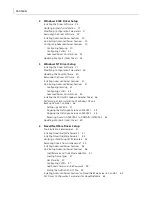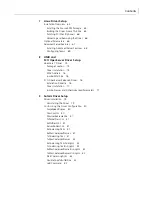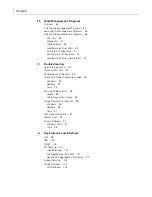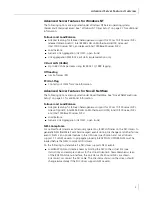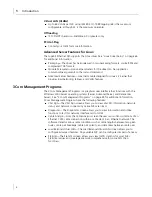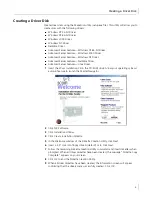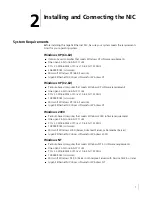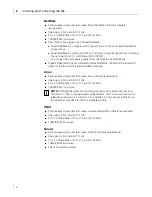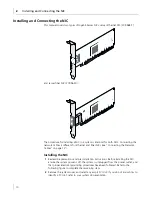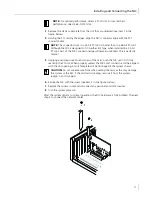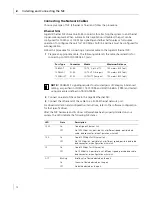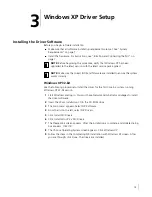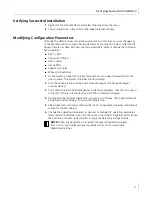
1
Introduction
2
Load Balance
Load balance is a protocol-specific scheme. The levels of support for IP, IPX, and other
protocols are listed below.
Load balance mode works with all Ethernet switches without configuring the switch ports
to any special trunking mode. Only IP traffic will be load-balanced in both inbound and
outbound directions. IPX traffic will be load-balanced in the outbound direction only.
Other protocol packets will be sent and received through one primary NIC only. Failover
for non-IP traffic is supported using 3Com,Broadcom,Alteon, and Intel NICs. The generic
trunking mode requires the Ethernet switch to support some form of port trunking mode
(for example, Cisco Systems Gigabit EtherChannel or other switch vendors’ link
aggregation mode). This mode is protocol-independent and all traffic should be load-
balanced and fault-tolerant.
Advanced Server Features for Windows 2000
The following options are supported under Windows 2000 Server operating systems
(Server, Advanced Server, Datacenter Server). See “Windows 2000 Driver Setup” on
page 25 for additional information.
Failover and Load Balance
■
Adapter teaming for failover (heterogeneous support for 3Com 10/100 server NICs,
Alteon AceNIC, released Intel 10/100 server NICs, released Intel 1000BaseSX server
NICs, and Intel 82559 LAN on Motherboard [LOM])
■
Load balance
■
Generic Link Aggregation (GEC/FEC, open trunk)
■
Link aggregation (IEEE 802.3ad) static implementation only
Virtual LAN (VLANs)
■
Up to 64 VLANs per team using IEEE 802.1Q-1988 tagging
Offloading
■
IP, TCP/UDP checksum
■
Support for segmentation of large TCP packets
■
Jumbo frames (9K)
Power Management
■
Remote Wake Up (magic packet, specific pattern)
PCI Hot-Plug
■
Microsoft
Protocol
Load Balancing
Failover
IP
Yes
Yes
IPX
Yes*
Yes**
Other protocols
No
Yes**
*Only outbound load-balancing for IPX (on NetWare only).
**For 3Com NICs.
NOTE:
Wake-on-LAN (WOL) is not supported with the fiber version of the
Gigabit Server NIC (3C996-SX). WOL must be disabled when using the fiber
Gigabit Server NIC.




